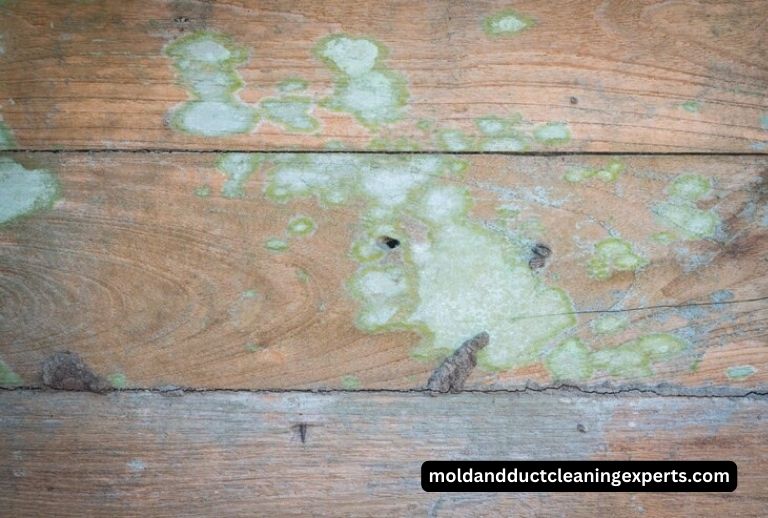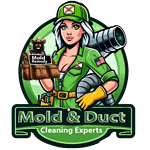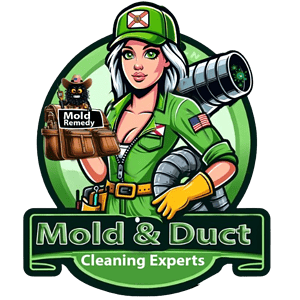
Mold in the attic is not just an unsightly issue; it’s a health hazard and a sign of underlying problems in your home. Addressing attic mold quickly can prevent a lot of issues, from structural damage to serious health risks. Mold exposure can lead to respiratory problems, allergic reactions, and other health concerns, especially for those with pre-existing conditions. Therefore, understanding how to tackle this problem effectively is essential for maintaining a healthy living environment.
If you’re facing mold issues in your attic, don’t wait until it’s too late. Take action now to protect your home and health. For expert assistance, consider reaching out to Mold & Duct Cleaning Experts in Florida and the surroundings.
Signs of Attic Mold
Before discussing the specific signs, it’s essential to understand that mold in the attic can often go unnoticed until it becomes a significant problem. Regular inspections are key to early detection and prevention. Here are some telltale signs that your attic may be harboring mold:
- Dark Staining: Mold can manifest as visible discolorations on attic plywood. Look out for black or dark stains as they are a clear indicator of mold presence.
- Hot and Stuffy Attic: A well-ventilated attic should feel breezy. If it’s hot and stuffy, it could mean that poor ventilation is leading to mold growth.
- Frost Buildup on Roof Sheathing: In colder climates, improper ventilation can cause water vapor to freeze on the underside of the roof, leading to mold when it thaws.
- The Smell of Mildew: A musty or moldy smell is a strong sign of mold. Trust your senses; if your attic smells off, it’s time to investigate.
- Wet Insulation: Wet Insulation is not only less effective but also a potential breeding ground for mold.
Causes of Attic Mold
Understanding the root causes of attic mold is important for effective prevention and treatment. Here are some common factors that contribute to mold growth in attics:
- Poor Ventilation: Attics require good air circulation to prevent moisture buildup. Blocked or insufficient ventilation can disrupt this balance, creating an environment where mold thrives.
- Air Leaks: Small openings in the attic can allow warm, moist air from the living space to seep in. This air can condense on cooler surfaces, leading to mold growth.
- Roof Leaks: Even minor leaks can introduce water into the attic, which can soak into wood and insulation, providing a perfect breeding ground for mold.
It’s important to regularly inspect these areas and address any issues quickly to maintain a mold-free attic.
DIY Methods for Attic Mold Removal
Removing mold from your attic can be a challenging task, but with the right approach, it’s possible to tackle it yourself for less severe cases. Here are some DIY methods that can help you get rid of attic mold:
Hydrogen Peroxide Method
Hydrogen peroxide is an effective, non-toxic alternative to harsher chemicals for mold removal. It’s particularly useful for attic mold because it’s safe on a variety of surfaces and materials. The process involves spraying a 3% hydrogen peroxide solution onto the mold, allowing it to penetrate and kill the mold spores, and then wiping the area clean. This method is suitable for non-porous surfaces and can help prevent mold recurrence when used regularly.
Detailed Procedure:
- Pour a 3% concentration of hydrogen peroxide into a spray bottle.
- Spray the solution generously onto the moldy surface, ensuring complete coverage.
- Let the solution sit for about 10 minutes to break down the mold.
- Use a scrub brush to agitate the area, helping to lift and remove the mold.
- After scrubbing, wipe the surface with a clean, damp cloth to remove any residual mold and hydrogen peroxide.
Vinegar Method
Vinegar, with its natural acidity, is a mild but effective mold killer that can be used on a variety of surfaces. It’s especially good for attic mold because it can penetrate porous materials and kill mold at the root. The vinegar method involves spraying undiluted vinegar on the mold, letting it sit to dissolve the mold, and then wiping the area clean.
Detailed Procedure:
- Fill a spray bottle with undiluted white vinegar and apply it directly to the mold.
- Allow the vinegar to remain on the surface for at least an hour to penetrate and kill the mold at its roots.
- After the vinegar has sat, scrub the area with a brush to remove the mold.
- Rinse the area with water and let it dry completely.
Baking Soda Method
Baking soda is a gentle, natural cleaning agent that can be used to treat mold in carpets. It’s safe for most materials and can also deodorize the affected area. The baking soda method involves creating a solution to spray on the mold, scrubbing it in, and then letting it sit before repeating if necessary.
Detailed Procedure:
- Mix baking soda with water to create a sprayable solution.
- Spray the solution onto the moldy area of the carpet.
- Use a scrub brush to work the solution into the carpet fibers.
- Allow the solution to sit for about 20 minutes to neutralize the mold.
- If necessary, repeat the process to ensure all mold is removed.
Remember to always wear protective gear like gloves and a mask when dealing with mold, and ensure the attic is well-ventilated during the cleaning process. Additionally, addressing the underlying cause of the moisture will help prevent mold from returning.
Professional Attic Mold Removal
Professional attic mold removal is essential when mold is extensive, inaccessible, or poses health risks. Experts use specialized techniques to eradicate mold and prevent future growth, ensuring safety and structural integrity. It’s advisable to hire professionals if the infestation is large, if you have health issues like asthma, or if the mold has caused structural damage. They’ll handle the problem comprehensively, from assessment to restoration.
When to Seek Professional Help:
- Advanced Mold Infestations: If the mold covers a large area, is within walls, or is in hard-to-reach places like HVAC systems, professional remediation is necessary.
- Health Risks: Individuals with health conditions like asthma or allergies should seek professional help, as mold can exacerbate these conditions.
- Structural Damage: When mold has caused damage to the building materials, professionals can address the issue without compromising the integrity of the structure.
- Safety: Professionals have the proper safety gear and training to handle toxic mold species, which can be hazardous to health.
Protect Your Home and Health with Mold & Duct Cleaning Experts!
For those situations where professional help is needed, Mold & Duct Cleaning Experts offer comprehensive services to ensure your attic is safe and mold-free. We specialize in tackling tough challenges, including black mold removal, and use advanced HEPA vacuums and air filtration devices to ensure the safety of your attic space.
Don’t compromise on the health of your home and family. If you suspect a serious mold issue in your attic, reach out to the professionals at Mold & Duct Cleaning Experts for effective mold inspection and removal.
FAQs
What is the Best Mold Remover for an Attic?
The best mold removers for attics are products like RMR-86 Pro Instant Mold Stain & Mildew Stain Remover and Concrobium Mold Control. These products are highly rated by users and are available on platforms like Amazon.
How Serious is Mold in the Attic?
Mold in the attic is serious because it can cause health problems ranging from allergies to mental health impairments. It can also lead to structural damage if left unattended.
How Do I Stop Mold From Growing in My Attic?
To stop mold growth in the attic, ensure proper ventilation, fix roof leaks, and control moisture levels. Using dehumidifiers and inspecting the attic regularly can also help prevent mold growth.
Can Attic Mold Go Away on its Own?
Attic mold will not disappear on its own. Without moisture, mold may go dormant but will not die. It can become active again if the conditions change. Therefore, it’s important to remove mold physically and address the underlying moisture issues.

